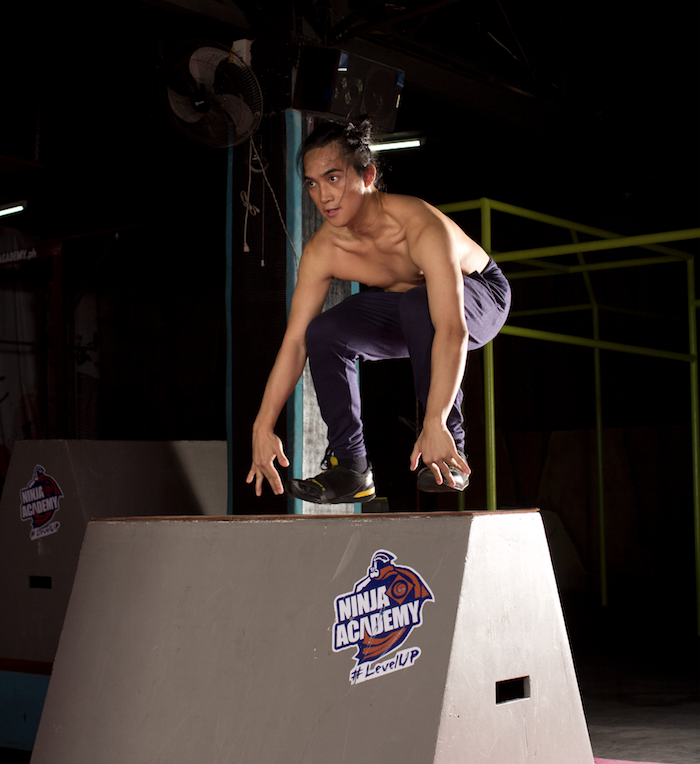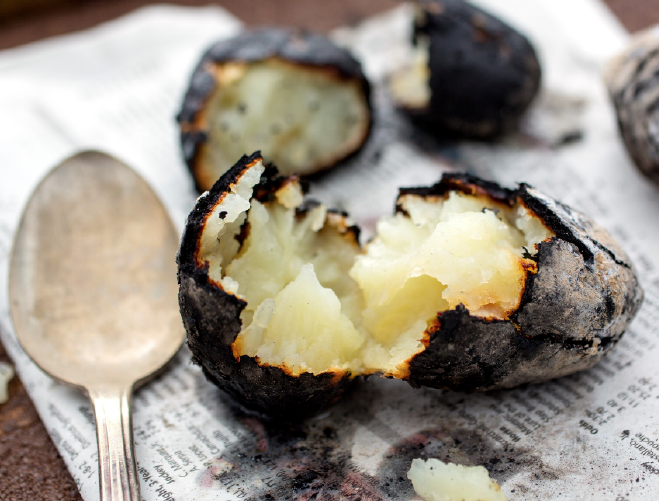Airborne and fit


A career in web development often means spending all day in a chair, fingers tapping away. For one hyper-fit programmer, however, the terms “airgap,” “brute force,” and “firewall” also mean very different things. Because soon after his stints in cyberspace, Jervyn Soriano, a.k.a. Blade, knifes through the air with effortless ease, practicing his chosen passion, parkour.
Skillfully navigating real space means a serious commitment to training, and 23-year-old Soriano has spent the last four years honing his craft. For his lean, agile physique, he trains four days a week, dividing this regimen into two categories: strength and technique. Rest days come in between.
Strength days develop his body’s capacity for explosiveness. Box jumps, pistol squats, dips, and climb-ups tax muscles most commonly used in parkour. On technique days, Soriano’s focus is on neuromuscular coordination. In his programming day job, the smallest mistake in syntax can crash an entire website. Likewise, when aiming to land on a foot-wide ledge on a 20-foot-high wall, there is no room for error or doubt.
The wiry expert explains that training makes him more confident. “You cannot leap a chasm in two jumps. If you hold back, if you don’t put everything into the effort, you’ll never make it.” Overriding this basic fear response is requisite. Soriano reveals that the years have taught him to calm nerves, visualize the motion, and remember that “this is something I’ve trained for.” That mindset applies even on off days. Soriano confesses that a large boulder, leering overhang, or abandoned set of monkey bars will tempt him into executing a move that’s been on his mind for days. This impulse to overcome an obstruction, simply “to become better,” is an attitude that applies to his daily life.
Soriano has been the go-to guy for parkour stunts in local TV commercials and print ads, recently as the stunt double of Daniel Padilla for his Bench Fix Clay Doh campaigns and passing around crackers in a typical office setup, parkour style, for a Rebisco TV commercial.
Parkour’s virtuous cycle of training-skills expanding -tougher training means more of Soriano’s life revolves around the sport, affecting how he eats, sleeps, even how he shops. On-demand outbursts of energy are among the most calorie-incinerating of exercises yet Soriano cites that diet was something he had to pay attention to early on. “I used to eat anything,” he confesses. “But now I portion control.” He doesn’t take coffee, supplements, and fast food. If he really has to cheat, the young athlete will opt for coffee shop confections. Soriano also avoids smoking and drinking, though all-night coding sessions are often unavoidable. These bouts often make Soriano miss out on sleep, but he insists on getting enough shut-eye to get to do optimal training.
This uncomplicated approach to life feels almost monk-like, and for a reason. Physically, the benefits of Soriano’s lifestyle go beyond flexibility, performance, and having a model body. Injury prevention is the most important thing. He recounts a performance of the Philippines Parkour and Free-running Association at the recent Primadonna fall/winter 2015 grand launch. There he was, executing flips over a runway when he suddenly found himself spiraling into an unexpected landing: a model’s face. Thinking fast, he shifted momentum and cancelled the flip into a dive-roll, saving both his and the model’s careers. Mentally, parkour hones Soriano’s spatial awareness and mental strength. Besides acting as a post-work endorphin source, consciously conditioning the mind for big, risky moves improves concentration and focus.
In exchange for parkour’s benefits, he advocates practitioners to do the sport good and with respect. This means asking for permission before attempting movement, observing right of way, and apologizing for honest mistakes all help boost the community’s image. Soriano admits that globally, what he and his comrades consider moving art is dismissed by some as hooliganism. It is perhaps this perception that remains parkour’s biggest hurdle in mainstream society, but Soriano is confident that together, the community can move over it, past it, and beyond it.









